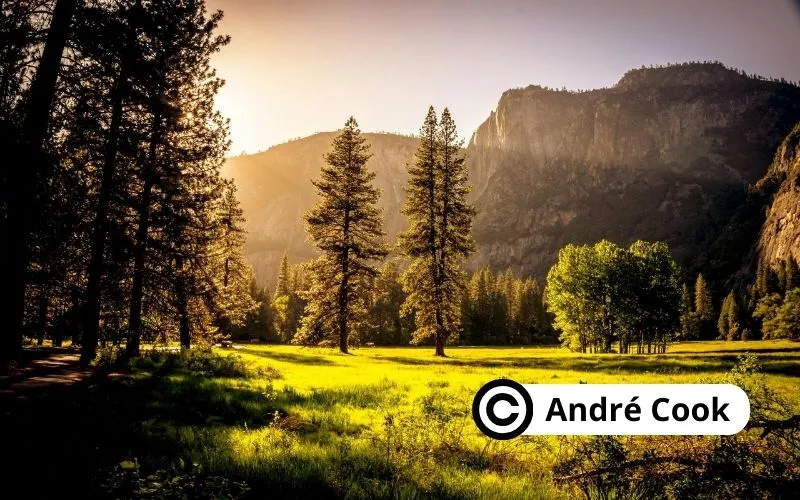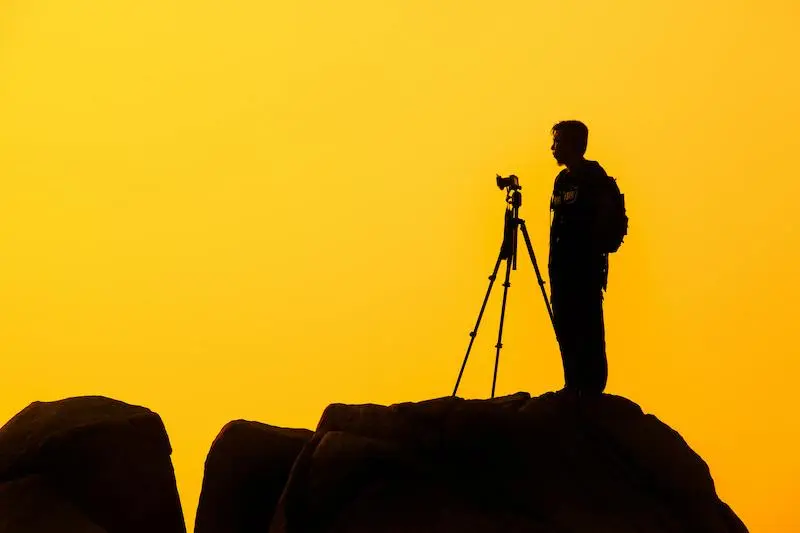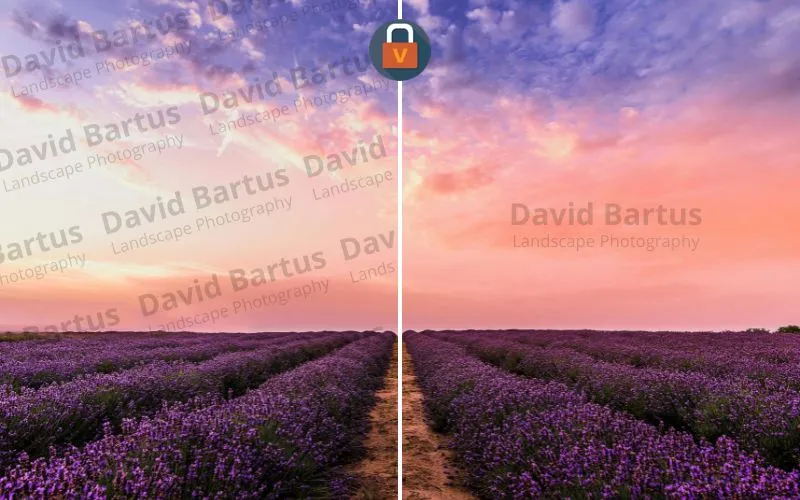As a photographer, artist, or content creator, I bet you’ve likely invested countless hours into perfecting your craft. The images you create are more than just pixels on a screen, they’re a representation of your vision, skill, and hard work. In an era where digital content can be easily copied and shared without consent, protecting your intellectual property becomes crucial. This is where photo watermarking comes into play, serving as both a shield and a signature for your creations.
What Does Watermarking in Photography Involve?

The Practical Importance of Watermarking
What Are the Different Types of Watermarking?
There are several types of watermarks you can use, depending on your needs and the nature of your images:
- Text ones : Simple and straightforward, these often include the creator’s name, website, or authenticity symbol. They are easy to make and can be customized in terms of font, size, and color. I find text watermarks particularly useful for quick identification.
- Graphic or Logo Watermarks : These are more visually distinctive and often involve a logo or symbol associated with the photographer or brand. I personally prefer using it for my professional work, as it helps in building brand recognition.
- Invisible Watermarks: Also known as digital or steganographic watermarks, these are embedded within the image data and are not visible to the naked eye. They require special software to detect and are used primarily for copyright protection rather than branding. Although less conspicuous, they provide a robust layer of security, which I find reassuring.
Steps to Insert Watermarks
Digital watermarks can be a straightforward process, especially with the abundance of software tools available today. Whether you use photo editing software like Adobe Photoshop, Lightroom, or dedicated watermarking apps, the steps generally involve:
- Creating the Watermark: This could be a text or a logo designed in software like Photoshop or Illustrator. I often spend time fine-tuning my watermark design to ensure it aligns with my brand aesthetics.
- Placement and Size: The watermark should be placed in a location that is visible yet doesn’t distract from the main subject of the photo. Common positions include the bottom corners or across the center, depending on the image’s composition. I like to experiment with different placements to see what works best for each photo.
- Opacity and Blending: Adjusting the transparency of the watermark can make it less intrusive while still serving its purpose. Finding the right balance is crucial; I’ve learned that too opaque a watermark can ruin the viewing experience, while too transparent can be easily overlooked or removed.

Why Is Watermarking Essential for Photographers?
Watermarking offers several benefits that make it an indispensable tool for photographers:
- Copyright Protection: A watermark serves as a visual claim of ownership, making it clear who the creator is. This can deter unauthorized use and can be useful in copyright disputes. I recall an instance where a watermarked photo of mine was used without permission; the watermark made it easy to prove the image is yours and resolve the issue.
- Branding: Consistent use of a watermark helps in building your brand identity. It makes your work recognizable and helps potential clients remember you. Over time, I’ve found that a unique watermark becomes synonymous with my style and quality of work.
- Deterrence against theft: While watermarks can be removed, doing so requires effort and often leaves traces. This can deter casual theft, as people are less likely to steal images that are watermarked. It’s not foolproof, but it’s an effective deterrent that gives me peace of mind.
Combining Visibility and Aesthetics in Photo Watermarking
One of the significant challenges I’ve encountered with watermarking, particularly in my work with both images and videos, is striking the right balance between visibility and aesthetic integrity. Watermarking is essential for protecting digital content, but it’s crucial that the mark is visible enough to serve its protective purpose without detracting from the image or video’s artistic quality. This challenge becomes even more pronounced in the realm of artistic photography and videography, where the visual appeal and the overall experience are paramount.
Over time, I’ve come to appreciate that subtlety can often be more powerful than a bold approach. A light, semi-transparent watermark, for instance, can be just as effective in protecting digital content as a more obtrusive mark. This delicate balance allows the watermark to fulfill its role in safeguarding the data while maintaining the intended visual or emotional impact of the work. In artistic endeavors, where every detail is carefully considered, preserving the integrity of the original image or video is crucial. It’s a nuanced process that requires both technical skill and a deep understanding of the medium’s artistic aspects.
Digital Rights Management (DRM) and Watermarking
Digital Rights Management (DRM) systems often utilize watermarking as a key technique to track and control the distribution of copyrighted material. In my experience working, I’ve seen how effective DRM can be in safeguarding digital creations. When it comes to photography, DRM systems can incorporate both visible and invisible watermarks, offering a robust strategy for protecting and managing the use of digital images.
This dual approach is something I find increasingly crucial in today’s digital landscape, where content can be easily copied and distributed without proper attribution or permission. Visible watermarks serve as an immediate, visual deterrent against unauthorized use, making it clear who owns the rights to the image or video. On the other hand, invisible watermarks provide a more subtle layer of certification, embedding information that can be used to trace the source of the digital creations and prove ownership, even if the visible watermark is removed or altered.
The combination of these watermarking methods provides a comprehensive safeguard for digital assets, ensuring that creators retain control over their work. For me, as someone deeply invested in the integrity and safety of digital media, understanding and implementing these DRM systems is not just a technical necessity but a vital part of respecting and preserving the value of creative work in the digital age. This approach underscores the importance of using advanced tools and techniques to navigate the complex issues surrounding digital rights and content distribution.

The Best Watermarking Software in 2024
How to Effectively Master Watermarking as a Photographer?
To get the most out of watermarking, it’s essential to follow some best practices and have watermarking techniques. Use a consistent watermark across all your photos to build brand recognition. This consistency helps in creating a cohesive portfolio that is easily identifiable. A watermark should be subtle yet visible. Avoid placing it in a way that distracts from the main subject. Over time, I’ve found that a minimalist approach often works best. I also think you should always keep a copy of your original, unwatermarked images. This ensures that you have a pristine version for future use or sale. It’s a simple step that can save a lot of headaches down the line.
Should I Use Watermarks?
While watermarking offers numerous benefits, it is not without its controversies. Over the years, I’ve encountered a range of opinions on the topic, especially from photographers and digital artists. Some argue that watermarks can detract from the visual experience of an image or video, potentially distracting viewers from the work’s intended artistic impact. This concern is particularly pronounced in genres like fine art photography, where the purity of the visual presentation is paramount. However, others believe that the risks of not using watermarks, such as unauthorized use or outright theft, far outweigh these potential downsides.
From my perspective, watermarking serves as a valuable tool in protecting one’s creative output. I’ve come to appreciate that when done thoughtfully, watermarking can be both a protective measure and a subtle signature. For instance, in my own work, I strive to balance the necessity of watermarking with aesthetic considerations. I’ve found that a well-placed, semi-transparent watermark on images and videos can provide a layer of security without overpowering the visual content.
In addition to protecting visual media, watermarking is also crucial for safeguarding important documents. Whether it’s digital contracts, certificates, or other critical documents, adding a watermark can help verify authenticity and prevent unauthorized alterations. This aspect of watermarking has become increasingly important to me, especially as more and more professional and legal documents are shared and stored digitally.
Ultimately, my stance is that watermarking is an essential part of digital content management. While it may not be foolproof and might not prevent all instances of unauthorized use, it does act as a significant deterrent. More importantly, it communicates that the creator values and intends to protect their work, whether it’s an image, a video, or an important digital file. For me, this practice is not just about preventing theft; it’s about asserting ownership and maintaining the integrity of one’s creative and professional output.
About Invisible Watermarking
Invisible watermarks, also known as digital or steganographic watermarks, offer a unique approach to safeguarding creative works. These watermarks are embedded within the data of an image or video, making them invisible to the naked eye. They can include crucial information such as the creator’s name, copyright details, or even tracking codes. The beauty of this method lies in its subtlety; the watermark is undetectable during regular viewing, requiring special software to uncover its presence. This technology is especially valuable for those of us who are keen on maintaining the aesthetic quality of our visual works while still ensuring that our creations are protected.
In my experience, invisible watermarks are indispensable in professional and commercial environments where copyright issues frequently arise. For photographers and videographers, this technique provides a way to assert ownership and manage rights without compromising the visual appeal of their work. When dealing with high-quality images or detailed videos, the presence of a visible watermark can sometimes be distracting or detract from the overall aesthetic. However, the invisible watermarking method allows for a seamless experience, preserving the beauty of the work while embedding critical data within the file.
Moreover, invisible watermarks aren’t just limited to visual media. They are equally important in the realm of documents, where they can be used to embed essential details within the document’s data. This can include everything from authorship information to sensitive corporate data. For professionals like myself, who often deal with confidential documents, the ability to add a watermark to these files without altering their appearance is invaluable. It ensures that the documents remain secure and that any unauthorized copies can be traced back to their source, all without any visible changes.
I’ve found that balancing the need for safety with the desire for aesthetic quality is a common challenge. Invisible watermarks provide a perfect solution, offering a way to discreetly protect visual and textual works. This approach is not just about safeguarding against theft; it’s about maintaining the integrity and authenticity of the creator’s vision, whether in an image, a video, or important documents. This technology has become an essential part of my toolkit, allowing me to share my work with confidence, knowing that my rights are upheld and my creative intentions are respected.
Enhance the Security of Your Photos with Watermarking
Metadata Integration
Low-Resolution Sharing

The Future of Watermarking: What to Expect?
As technology continues to advance, so too do the methods for safeguarding digital assets. In the realm of photography and video, innovative techniques like blockchain for provenance tracking and AI-driven watermarking are emerging as cutting-edge solutions. These advancements offer new and improved ways to protect and manage digital images, ensuring that creators maintain control over their work. I find these developments both exciting and reassuring, as they promise to make the process of securing digital content more robust and versatile.
Blockchain technology, for example, provides a transparent and immutable ledger that can be used to verify the ownership and provenance of digital images. This system not only helps in tracing the history of an image but also enhances the credibility and authenticity of the work. As someone who deeply values the integrity of my creative projects, the idea of using blockchain to secure and validate my photos and videos is particularly appealing. It offers a level of assurance that my work will be recognized as authentically mine, regardless of how widely it is shared or distributed.
AI-driven watermarking, on the other hand, represents a significant leap forward in the field of digital privacy. These systems use artificial intelligence to embed marks into images and videos in ways that are both more secure and less obtrusive. This technology can adapt and evolve, potentially making it much harder for unauthorized users to remove or alter these identifiers. For someone like me, who is passionate about both the creative and protective aspects of my work, AI-driven solutions offer a promising blend of safety and subtlety.
These innovations are not limited to just images and videos; they are also being applied to documents and other digital media. In professional settings, where the security of sensitive data is paramount, such advanced methods can provide an additional layer of defence. By integrating blockchain and AI-driven technologies into the management of digital documents, it’s possible to maintain strict control over access and distribution, further safeguarding the content.
In summary, the evolution of technology is bringing about exciting new methods for protecting digital assets. Whether through blockchain, AI, or other emerging technologies, the future of digital safety looks bright. For me, these advancements are not just about protecting my work; they are about embracing new possibilities and enhancing the way I create and share my projects. As a creator, it’s thrilling to see these tools evolve, offering more secure, flexible, and effective ways to ensure that my work is used and appreciated as intended.
In Conclusion
Photo watermarking is an essential tool for photographers, artists, and digital creators. It combines elements of privacy, branding, and aesthetic enhancement, serving as both a protective measure and a signature of ownership. This practice is crucial in safeguarding digital creations like photos and videos from unauthorized use, making it a vital aspect of digital rights management.
In my experience, adding a mark to my photos has become a fundamental part of my creative process. As a photographer, I invest significant time and effort into each image, each one representing a unique vision or narrative. Applying a subtle yet identifiable mark allows me to assert ownership while maintaining the visual integrity of the work. This balance is key, as I want to ensure that the mark is prominent enough to deter unauthorized use, yet discreet enough not to detract from the aesthetic appeal.
This practice extends to the world of video production, where the risks of unauthorized copying and sharing are even more pronounced. By embedding a digital mark in a video, I can manage its distribution and track how it is shared. This is particularly important in an era where digital media can be easily replicated and disseminated without permission.
The use of digital identifiers is not confined to visual media alone; it is also a valuable method for securing documents. In professional environments, documents often contain sensitive data that must be protected from unauthorized access or distribution. Adding a unique identifier to documents helps in tracing their origin and ensures they are handled with the appropriate level of confidentiality. This practice not only enhances defense but also preserves the integrity and intended use of the information.
While the use of such marks is a powerful tool, it’s important to recognize that no method is entirely foolproof. There are always ways to circumvent guarantee measures, but the presence of a digital mark acts as a deterrent, signaling that the creator takes their work and its usage seriously. Moreover, combining this practice with other guarantee measures, such as metadata embedding and digital rights management, significantly enhances its effectiveness.
In conclusion, incorporating digital marks into my work is an indispensable aspect of my role as a creator. It blends elements of safety, branding, and aesthetics, supporting my efforts to maintain control over my creative output. Whether it’s an image, a video, or a document, this practice helps ensure that my work is used and appreciated as I intend. This not only protects my rights as an artist but also allows me to share my creations with confidence, knowing they carry a mark of authenticity and care.










